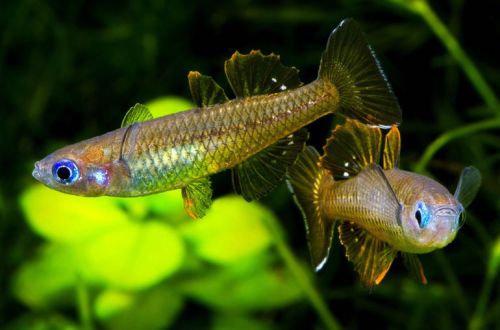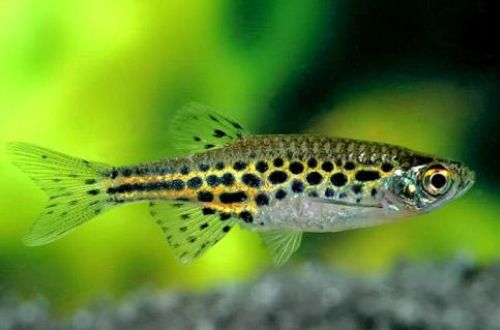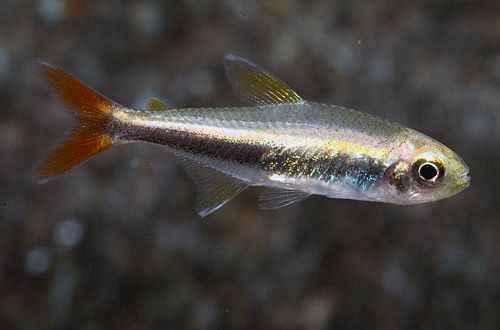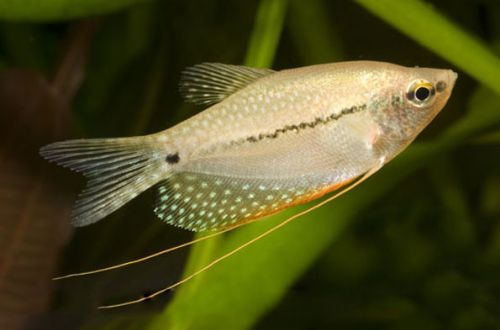
Blue-eyed graceful
Pseudomugil signifer, Blue-eyed tender or Blue-eyed graceful, scientific name Pseudomugil tenellus, belongs to the Pseudomugilidae family. Beautiful slender fish that fully justifies its name. Easy to keep and breed, able to adapt to a variety of water conditions, which along with a peaceful disposition makes it an excellent choice for almost any tropical aquarium.

Contents
Habitat
It comes from the northern part of the Australian continent, from a narrow strip along the sea coast, where the remains of tropical rainforests are still preserved, interspersed with shrouds. Geographically, the habitat is limited between the city of Darwin to Port Douglas on the Cape York Peninsula. Also, varieties of this species are found on the islands of New Guinea and Aru.
Fish inhabit the main channels and deltas of rivers flowing into the sea, coastal reservoirs with fresh and brackish water, including tidal estuaries and salt marshes. Prefers regions with stagnant water and rich aquatic vegetation.
Brief information:
- The volume of the aquarium – from 80 liters.
- Temperature – 25-32°C
- Value pH — 5.5–8.0
- Water hardness – soft to hard (5-21 dGH)
- Substrate type – any
- Lighting – subdued / moderate
- Brackish water – no
- Water Movement – Low/Moderate
- The size of the fish is up to 5.5 cm.
- Food – any floating food, mostly meat
- Temperament – peaceful active
- Keeping in a flock of at least 8-10 individuals
Description
Adults reach a length of about 4–5 cm. A characteristic feature is blue eyes, which is reflected in the name of the fish. The main color is yellowish with a silvery sheen, translucent short fins. Depending on the region of origin, shades may vary. Sexual dimorphism is weakly expressed, males are only slightly larger than females and have more elongated fins.
Food
Accepts all types of food (dry floating, live, frozen) of suitable size with herbal supplements. If possible, the basis of the diet should be products such as small bloodworms, daphnia, brine shrimp.
Maintenance and care, decoration of the aquarium
The volume of the aquarium for a group of ten fish starts from 80 liters. The design uses a large number of plants (live or artificial), arranged in groups to save free areas for swimming. The presence of shelters in the form of snags, roots or branches of trees is welcome. Any substrate, the soil is selected based on the needs of plants. The lighting is subdued. Floating plants can serve as an additional means of shading the aquarium.
Of great importance in the maintenance of Blue-eyed graceful is pure oxygen-rich water with stable hydrochemical parameters. Avoid sudden fluctuations in temperature, pH and dGH values. It is allowed to use in brackish aquariums with a salinity of not more than 15 g per 1 liter of water.
Behavior and Compatibility
Peaceful moving fish. Due to the ability to live in a wide variety of water conditions, the blue-eye graceful can successfully coexist with various groups of fish of similar size and behavior. Keeping a flock of at least 8-10 individuals of both sexes.
Breeding / breeding
Breeding is quite simple and does not require separate preparations. Spawning can occur at any time during the year. The impetus for the beginning of the mating season is the increase in temperature to the upper allowable values (28–30°C).
The females lay their eggs among the thickets of plants. For these purposes, small-leaved and undersized species, such as Java moss, or artificial spawning plants (including home-made ones), are best suited. The dominant male usually fertilizes several clutches from different females at once. Parental instincts are not developed; immediately after spawning, fish can eat their own eggs.
In order to preserve future offspring, fertilized eggs are timely transferred to a separate tank with identical water conditions. The fry will stay in it until they grow large enough (usually about six months). This separate tank is equipped with the same set of equipment as the main aquarium. The exception is the filtration system, in this case it is worth using a simple airlift filter with a sponge as a filter material. It will provide sufficient cleaning and avoid accidental suction of fry.
The incubation period lasts about 10 days, depending on the temperature. In the first days of life, micro-feed, such as ciliates, will be required. A week later, you can already serve Artemia nauplii.
Fish diseases
Health problems arise only in case of injuries or when kept in unsuitable conditions, which depresses the immune system and, as a result, provokes the occurrence of any disease. In the event of the appearance of the first symptoms, first of all, it is necessary to check the water for the excess of certain indicators or the presence of dangerous concentrations of toxic substances (nitrites, nitrates, ammonium, etc.). If deviations are found, bring all values back to normal and only then proceed with treatment. Read more about symptoms and treatments in the Aquarium Fish Diseases section.





